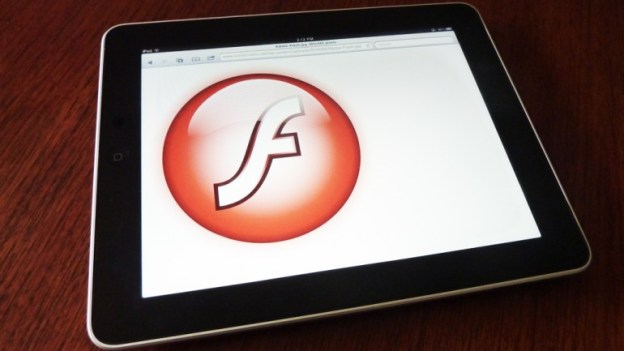
Back when Apple launched the iPhone in 2007, haters declared what would become the world’s most popular phone dead in the water because it didn’t (and still doesn’t) support Adobe Flash. Everyone laughed at Apple. How stupid and arrogant could Steve Jobs really be? Countless forums on the topic and jibes at Apple’s expense followed. Fans of other operating systems touted their superiority because of their ability to use Flash.
Now, just four years later, not even Adobe will support Flash for mobile devices anymore.
According to an Adobe memo to analysts, uncovered by Jason Perlow at ZDNet, Adobe plans to stop development of Flash for mobile browsers and refocus its efforts on HTML5, which allows browsers to display basically the same kind of content as Flash, but without relying on Adobe’s proprietary technology — i.e. no annoying plugins.
“Our future work with Flash on mobile devices will be focused on enabling Flash developers to package native apps with Adobe AIR for all the major app stores,” reads the memo. “We will no longer adapt Flash Player for mobile devices to new browser, OS version or device configurations. Some of our source code licensees may opt to continue working on and releasing their own implementations. We will continue to support the current Android and PlayBook configurations with critical bug fixes and security updates.”
Of course, the logical question to ask is whether or not Flash will survive on the PC. Apple, which owns 5 percent of the world’s PC market share, does not include Flash as a default install on its computers. And just recently, Microsoft announced that it too will abandon Flash as a default in its upcoming Windows 8 operating system.
If the late Steve Jobs is to be trusted on this matter — and, it would seem, he should be — then Flash is destined to die altogether.
“New open standards created in the mobile era, such as HTML5, will win on mobile devices (and PCs too),” wrote Jobs in an infamous “Thoughts on Flash” post from April 2010. “Perhaps Adobe should focus more on creating great HTML5 tools for the future, and less on criticizing Apple for leaving the past behind.”
Who’s laughing now?
UPDATE: Adobe has confirmed that it will discontinue development of Flash for mobile devices. Read the full details here.
[Image via]
Editors' Recommendations
- How to view Instagram without an account
- The most common Skype problems and how to fix them
- The 6 best tablets for kids in 2024
- There’s a big problem with the iPhone’s Photos app
- 10 iPhone productivity apps you need to download right now

